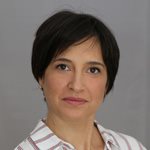MDS
דיון מתוך פורום המטולוגיה
ד"ר שלום. - האם התרופה "גליבק" או "אינטרפרין" יכול לעזור ולהאריך חיים לחולה MDS מסוג RAEB 7Q ולו במעט ? - האם קיימת תרופה כלשהי בארץ/בעולם שמטפלת במחלה זו? בתודה מראש אבי
גליבק אינה תרופה מתאימה ל- MDS וגם לא אינטרפרון. כפי שהזכרנו בעבר, אין בעצם טיפול חד וחלק ל- MDS. בא בחשבון לתת טיפול אנטי לאוקמי, אולי בשילוב השתלה / מתן תאי אב מתורם או עצמיים, אבל זה כמובן תלוי בגיל החולה, במצבו הכללי ובעוד פרמטרים, אבל כרוך בזה סיכון לא מבוטל וסיכויי ההצלחה אינם גדולים במיוחד.
כמה מקורות בנושא טיפול ב- ATG ב- MDS. זה נסיוני ולא מתאים לכל מקרה, אבל אולי תשאל את הרופאים המטפלים באביך לגבי האפשרות. Br J Haematol 2000 Mar;108(3):582-91 Effects of antithymocyte globulin on bone marrow CD34+ cells in aplastic anaemia and myelodysplasia. Killick SB, Marsh JC, Gordon-Smith EC, Sorlin L, Gibson FM Department of Haematology, St George's Hospital Medical School, London SW17 0RE, UK; IMTIX Sangstat, Lyon, France. The mechanism of action of antithymocyte globulin (ATG) in the treatment of aplastic anaemia (AA) and myelodysplastic syndromes (MDS) is poorly understood and may involve many different mechanisms. The aim of this in vitro study was to investigate further the effect of ATG on haemopoietic progenitor cells. A total of 16 patients (10 AA and 6 MDS) and 12 normal control subjects were studied. Purified bone marrow (BM) CD34+ cells were cultured in committed progenitor assay in the presence of ATG and autologous serum, then scored on day 14 for granulocyte-monocyte colony-forming units (CFU-GM) and erythroid colonies. ATG was found to be inhibitory to haemopoietic progenitor cells at high concentrations (1000 microg/ml and 100 microg/ml). This was confirmed by CD34-FITC and 7AAD staining of purified normal CD34+ cells after overnight incubation with ATG. In contrast, at lower doses (0.1-10 microg/ml), ATG produced an increase in colony growth in most normal, MDS and AA BM CD34+ cells. The greatest effect was in patients with non-severe AA, in whom the greatest increase in CFU-GM was seen at 0.5 microg/ml (P < 0.02) and 0.1 microg/ml (P = 0.02) and erythroid colonies at 0.1 microg/ml (P < 0.05). Serum ATG levels peaked during infusion to levels that were found to be toxic to haemopoietic progenitor cells in vitro and fell thereafter to levels that were associated with the highest colony numbers (0.1 and 0.5 microg/ml) in vitro. These results suggest that an increase in haemopoietic progenitor cells by ATG may be one of several important mechanisms for haematological recovery in AA and MDS. ************************ Myelodysplasia. Dansey R Karmanos Cancer Institute/Wayne State University, Detroit, MI 48201, USA. The epidemiology of myelodysplasia, or myelodysplastic syndrome (MDS), is in evolution. As populations are aging and therapies for cancer are improving, the frequency of this disease is increasing. Recent population surveys and case-control studies are reviewed. Knowledge of the molecular pathogenesis and pathophysiology of MDS is advancing at a remarkable pace and new information on molecular events is presented. The treatment of MDS is complex and highly individualized. Although many patients are older and may have significant co-morbid disease or poor performance status, there are curative options with allogeneic transplantation for selected patients. The recent transplant publications are reviewed. Other investigative treatment approaches, including the use of new chemotherapy agents, growth factor combinations, and antithymocyte globulin appear promising and are reviewed. ***************************** Rinsho Ketsueki 1999 Oct;40(10):1093-9 [Successful immunosuppressive therapy for a patient with hypoplastic myelodysplastic syndrome]. [Article in Japanese] Takanashi M, Kadono Y, Tabata Y, Hibi S Department of Pediatrics, Maizuru National Hospital. We encountered a patient with hypoplastic myelodysplastic syndrome (MDS) who responded to immunosuppressive therapy including antithymocyte globulin and cyclosporin A (CsA). A 13-year-old girl was referred to our hospital because of pancytopenia. Bone marrow smears disclosed extreme hypocellularity without cellular atypism. A diagnosis of aplastic anemia was made, and immunosuppressive therapy consisting of ATG, CsA, granulocytecolony-stimulating factor (G-CSF), methylprednisolone, and danazol was started. A month later dysplastic cells appeared in the bone marrow. The karyotype of pretreatment bone marrow cells was 46, XX, del (13) (q12; q14). Therefore, the final diagnosis was hypoplastic MDS. CsA and danazol were continued. The patient became transfusion-independent 1 month later and dysplastic cells disappeared from bone marrow 3 months later. The chromosomal abnormality also became undetectable 6 months after the initiation of treatment. These findings indicated that immunosuppressive therapy is beneficial for patients with hypoplastic MDS. ******************************* Int J Clin Oncol 2001 Apr;6(2):74-9 Treatment of myelodysplastic syndromes. Asano Y, Niho Y Chihaya Hospital, 2-30-1 Chihaya, Higashi-ku, Fukuoka 813-8501, Japan. [Medline record in process] The IPSS scoring system is useful to establish the appropriate treatment plan in MDS. Growth factors may alleviate both anemia and neutropenia in some MDS patients. Serum Epo levels and need for transfusion serve as good predictors of the erythroid response to the combination of Epo and G-CSF. Subgroups of MDS patients may respond favorably to immunosuppressive therapies such as CyA and ATG. Low-dose chemotherapy may also improve peripheral blood counts. Platelet counts, bone marrow cellularity, chromosome aberrations, and ringed sideroblasts combine to create a model predicting the response to low-dose ara-C. High-dose chemotherapy may lead to complete remission in about half of MDS patients, but the duration of remission is often short. The only proven curative therapy for MDS is allogeneic stem cell transplantation, resulting in an overall disease-free survival rate of about 40%. Only a minority of patients, however, can undergo allogeneic transplantation, both because of patient age and the availability of suitable donors. Autologous stem cell transplantation may be an option for selected patients who are unable to find allogeneic donors. Because the clinical features of patients with MDS are quite heterogeneous, the development of more accurate predictive models may be necessary to improve the efficacy of treatment ***************************************

